In this article, we have rounded up 13 experts’ recommendations (in-depth reviews) on the best PayPal alternatives for SMBs (international payments) to help you make a well-informed decision today.
PayPal, the successor of Confinity, Inc was founded in December 1998, is an online payment system that helps you transfer money online worldwide. Even, at Solution Suggest, we still use PayPal for clients who prefer it. None of the online payment systems can fulfill all requirements. So, you have to choose payment solutions that work best for your business and customers.
Why Do You Need PayPal Alternatives?
Well, there are so many reasons. Check out some below.
- If you want seller protection for digital products or services, you need a good PayPal alternative.
- PayPal alternatives take lower fees for chargebacks.
- If you want a faster turnaround to withdraw money, go for PayPal alternatives. If you are a new seller, PayPal will hold your money for up to 21 days in case the buyer doesn’t confirm receipt. Also, it may take 3-5 days to transfer money into your bank account from the PayPal account.
- PayPal has been known for freezing accounts for up to 6 months without prior notice. Due to this, Odeh Ahwal of EcomDimes started using Paysera and Skrill for his business payments.
- “Data portability is not good which means you will face some issues when you want to migrate your transaction on another payment system”, says Farhan of AAlogics.
- “PayPal charges you a 3.5% to 4.0% conversion fee depending on the currency which is crazy!” reported Anh Trinh of NetBookNews.
- PayPal no longer has phone service and you have to wait for hours to get responses through their online chat system. Customer service is horrific.
Explore the Best PayPal Alternatives for SMBs Handling International Payments in 2025
1. 2Checkout

It is one of the best PayPal alternatives for international payments in 2025.

It’s a pretty new and small business and I know the names and each and every one of my employees. I pay all of them remotely since my business is technically an online business.
Being the CEO of an online business, my number one priority is to cut costs while still retaining the quality of my employees which is why I started hiring people from other countries who are willing to accept a much lower rate than the ones here.
What I really hated about PayPal was the exchange rate and conversion fees. They’ve decided to charge you a 3.5% to 4.0% conversion fee depending on the currency which is crazy! I didn’t want to lose money with PayPal so I shifted to 2Checkout.
Not only does 2Checkout offer a much lesser conversion fee as low as 2% but it’s also very friendly with international payments which is why I like it and why I’m using it right now.
2Checkout Pros:
- Fast and reliable support team
- Offers multiple methods for payment
- Integrates well with other online software
2Checkout Cons:
- The support team sometimes takes action without notifying you
- It’s not user-friendly
- Poor mobile support
From seeing the pros and cons, you can tell that 2Checkout is not perfect. But it does beat PayPal in some areas while lagging in others. So if you’re deciding whether or not to switch to 2Checkout from PayPal, then consider what both platforms bring to the table.
I chose 2Checkout in the end because it works well with my hiring of workers from other countries and its conversion rate and fees work out for me as well.
— Anh Trinh, Managing Editor of NetBookNews
2. Transferwise

Transferwise is a good alternative to PayPal for SMBs to send or receive international payments in 2025.

I switched because PayPal’s customer service is horrific, and I can no longer reach anyone. The company no longer has a phone service. I don’t have the time to stare at a computer screen to “chat” for a half-hour to resolve a simple problem. I have one issue now that is unresolved for over a week, which is ridiculous. PayPal is disrespectful of my time.
I use Transferwise for my international payments. The company offers transparency on costs, low fees, and excellent customer service. I once had an issue where I was overseas and had to transfer money to a hotel.
Transferwise came up with a creative solution to resolve opening an account while I was on the road. For me, I like working with companies that understand customer service and think outside the box.
— Janice S. Lintz, Founder and CEO of Hearing Access & Innovations
Try Transferwise if you’re looking for a good PayPal alternative in 2025.

When it comes to international payments for my small business, I’ve looked into a few PayPal alternatives and decided to switch to Transferwise recently due to the quicker transfers, the ability to bill my clients in their own currency, and more accurate/less inflated conversion rates. It also came with account numbers/routing numbers for banks in the U.S., UK, Europe, Australia, and New Zealand, making transfers within those countries a breeze.
Transferwise also has substantially fewer fees than PayPal, which was a big factor for me. PayPal has a pretty standard 2.9% + $0.30 for transactions in the U.S. and 4.4% + fee-based on currency received – this can add up pretty quickly. However, TransferWisehas a much smaller fee, some as low as 0.37%.
For instance, with TransferWise a payment of $1,000 to Europe will only run you $5.20, whereas with PayPal you will be paying nearly $30 in fees. Bank transfers are also much easier and quicker with TransferWise as the money you send never really crosses borders.
— Kimberly Porter, CEO of Microcredit Summit
3. Veem
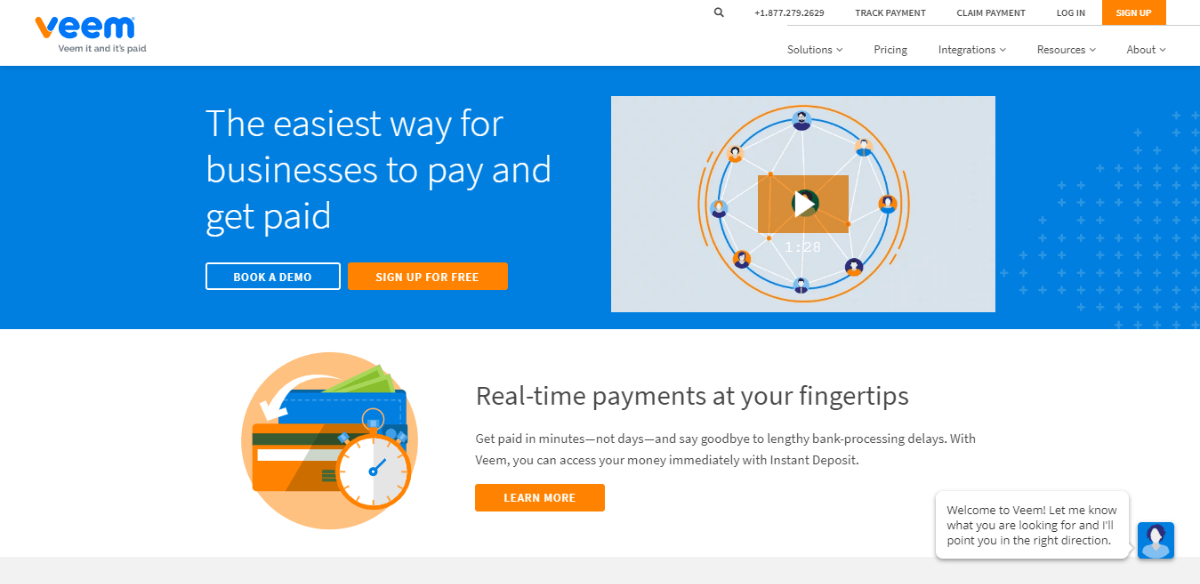
The top alternative to PayPal for international payments is Veem in 2025.

We switched over to Veem mostly because of the low transaction fees for both the sender and receiver.
In fact, if you are sending funds from a U.S. checking account, there are no fees. The receiver is charged a minimal fee, which depends on the transaction amount.
It can also work with popular platforms such as QuickBooks, Xero, Oracle, Magento & Zapier for integrated payment options. It comes with a great invoice generation tool that allows users to build invoice templates, track payments, integrate with accounting software, and allows you to organize your invoices and documents within one tool.
Veem is a convenient and intuitive global payment platform for small businesses seeking a more affordable alternative to PayPal.
— Angelo Frisina, Founder & CEO at Sunlight Media LLC
4. Google Pay Send
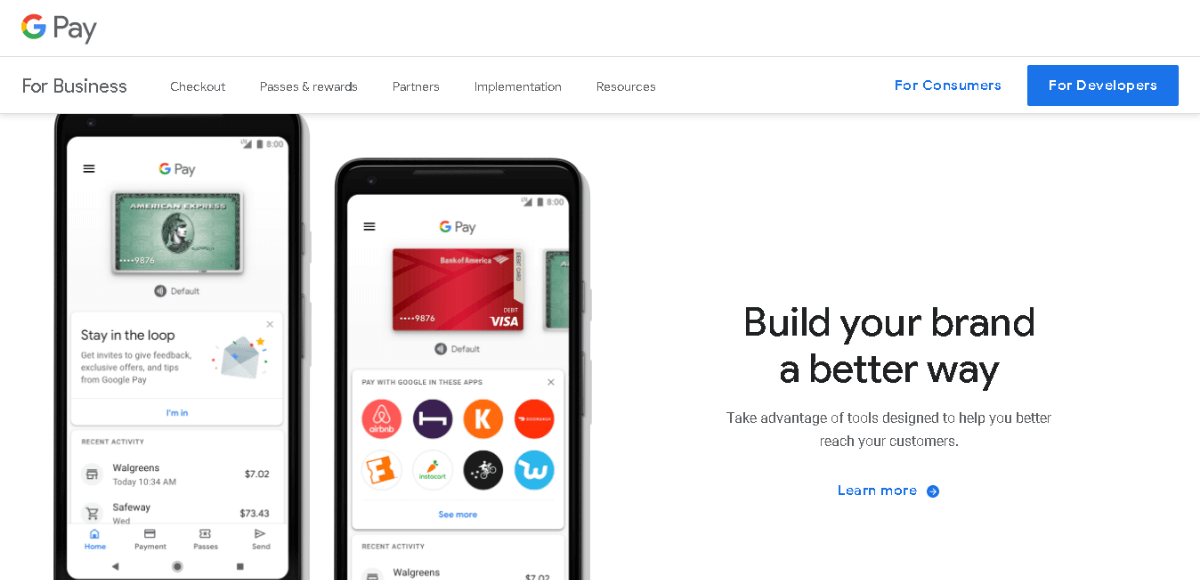
Google Pay Send is one of the top PayPal alternatives.

We’ve had issues with PayPal in the past. Specifically, the fact that PayPal will almost always side with the customer, regardless of the proof offered by the vendor. That and the lack of support in some countries made us look for another solution, and for now, we’re using Google Pay Send as an option.
As a PayPal alternative, it functions well enough. Google Pay Send is easy to set up and integrate, and I’d consider the security to be better than PayPal. The fees for Google Pay Send are much lower, for us and the customer. I’d say it isn’t as feature-rich as PayPal when it comes to integrating, though, and fewer people are familiar with using it.
We’ve had no issues with international payments thus far. Google Pay Send doesn’t charge a fee if someone is buying with us, and the exchange rate is comparable to other services.
— Rex Freiberger, CEO at Gadget Review
5. Paysera and Skrill
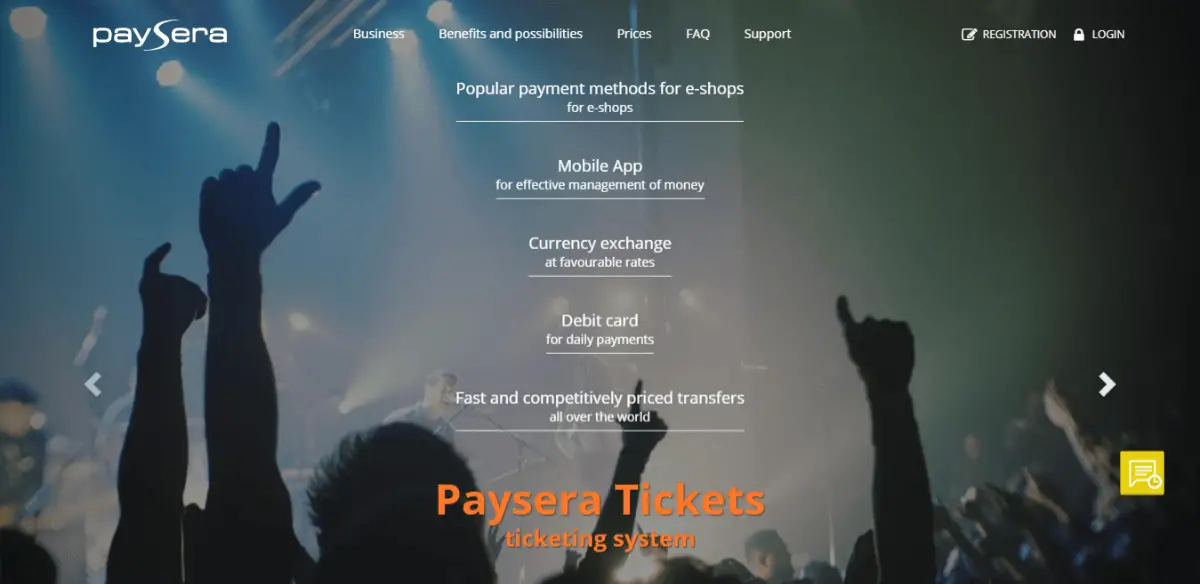
Paysera and Skrill are the top alternatives to PayPal for international transactions in 2025.

Back then when I stumbled into dropshipping, I thought that PayPal was the only solution for capturing online payments.
That’s until I faced the nightmare in which they locked my account for 180 days, while it had over $9,000! Luckily, Skrill and Paysera Bank have been outstanding PayPal alternatives, and a great replacement to receive my payments online, internationally!
Setting up an account using Paysera was a piece of cake-process! And they allowed me to order their international credit card.
Regarding Skrill, it’s the UK parallel of PayPal, and Paysafe Group is the parent organization. Its fees are highly affordable and satisfying, and could definitely be a great replacement for PayPal.
No matter what you do online, utilizing the right tools and payment processors can give you a competitive advantage, and make your business run smoother!
— Odeh Ahwal, Owner at EcomDimes
6. Remitly
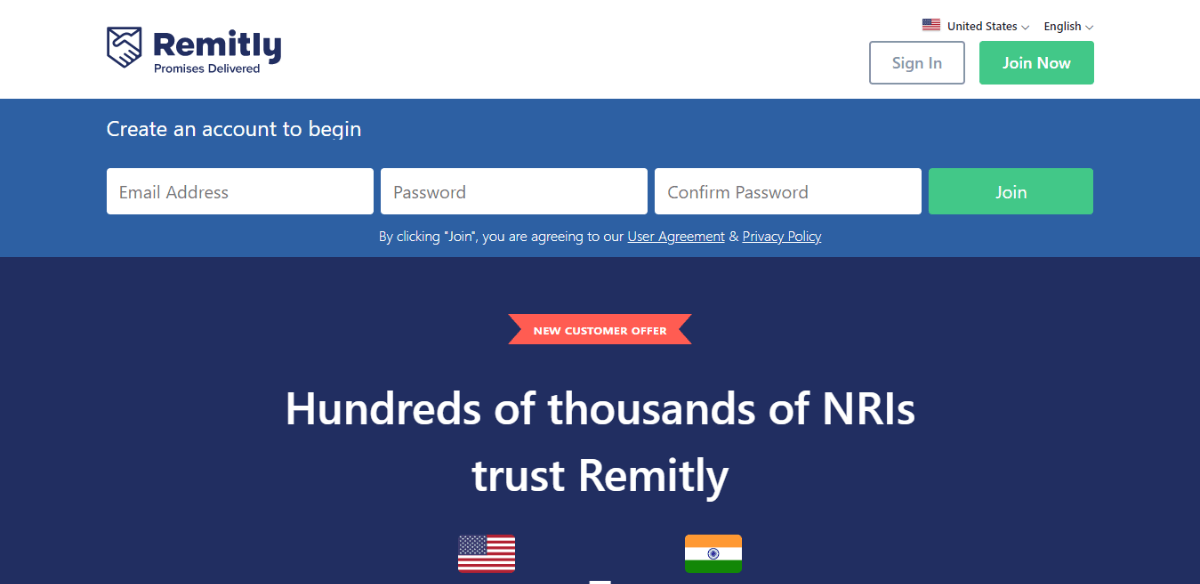
Remitly is a cheaper and faster alternative to PayPal in 2025.

I am the founder of a digital marketing agency based in India and have clients globally. PayPal’s currency and service charges are very high, and sometimes it becomes unfeasible to use it for larger transactions. This is the reason that I use “Remitly” which is a cheaper and faster alternative to PayPal.
I will share my experience with charges associated with PayPal and Remitly for transfer of payment of $100 from the USA to India:
- Remitly charges: $3.99
- PayPal Charges: $10.59
Because of the hefty charges of PayPal, I had to switch to a better alternative, which is Remitly.
Transfer time in Remitly is instant, and money is deposited into the bank account directly, while in PayPal it takes more than 2-3 working days.
Remitly also has a Unified payment interface (UPI) which is more convenient for users to make payments. It also provides cash pickup facilities across 140,000 locations.
The limitation of Remitly is that it is available to only a few major countries like the U.S., Canada, the Eurozone, Australia, and the U.K. and can send payments to over 49 countries. Also if you have a payment of a small value, charges will be fixed, so it becomes expensive. But considering the positive sides of Remitly, it is definitely a better alternative to PayPal.
— Harshil Bhatnagar, Founder at Staiir Social Media Marketing
7. Stripe
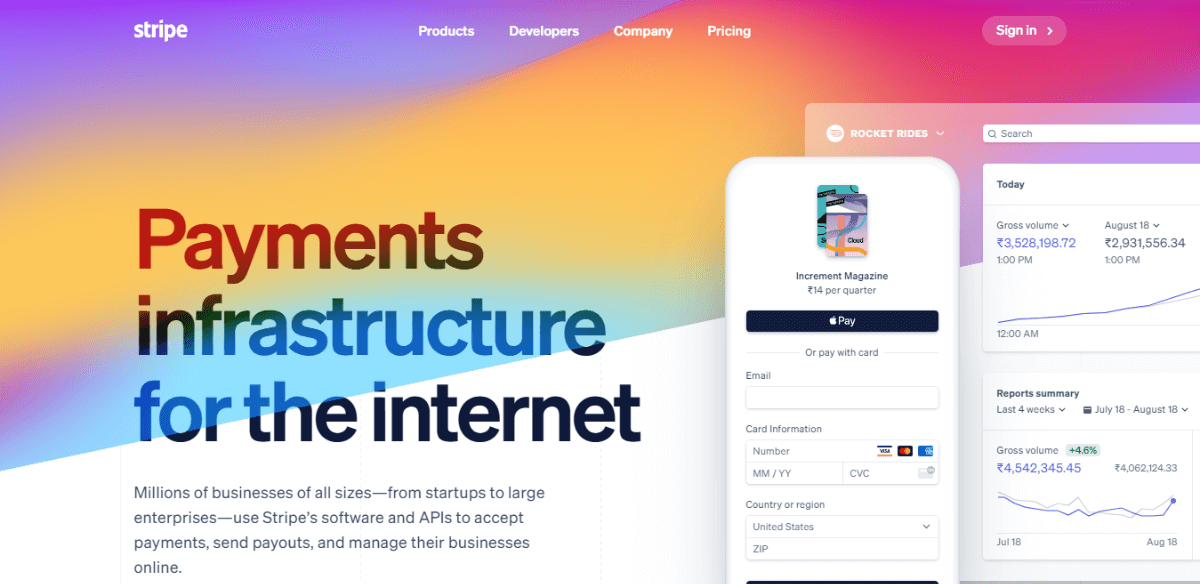
If you need a PayPal alternative then Stripe is the best option in 2025.

Because it is giving many features to make it worth in the market. Let’s see some of the Strip features that are better than Paypal:
- Stripe offers micropayment support with the same flat rate as your standard fee per transaction. PayPal’s micropayment rates are 5% +.05¢ per transaction.
- Stripe has a chargeback fee of $15, while PayPal’s chargeback fee is $20.
- Stripe has several ways to get in touch when you have questions including a help center, social media, and chat support channels (with support reps or developers), plus phone and email support.
- Stripe is more customizable than PayPal which helps you when integrating it into your online business.
- Stripe values Data Portability, so they’ll help you move your credit card data in a PCI-compliant way. PayPal won’t give you this data if you try to switch processors, which can be a headache.
And there you have it! You can now make an educated decision about whether Stripe vs PayPal will be a better fit for your business to collect payments or donations online, based on their individual pros and cons.
— Farhan Karim, Digital Marketing Strategist at AAlogics

Stripe charges 2.9% + $0.3 for each transaction, which is the case with PayPal. However, for international cards, PayPal charges 1% more while Stripe doesn’t charge any extra amount. So, when it comes to international payments Stripe is the clear winner over PayPal.
Micro Payments (less than $10) PayPal calculates differently. It charges 5% + $0.05.
For example, if you accept $10 payments then PayPal would charge 10*5/100 + $0.05 = $0.55 while Stripe will charge 2.9*100/10 + 0.3 = $0.59. So, when it comes to micropayments PayPal seems a more lucrative option.
Overall Stripe seems a better option when it comes to international payments. PayPal could work out for payments less than $10.
—- Artur Yolchyan, Owner at Coding Skills
8. Payoneer

Payoneer is the best PayPal alternative providing a better foreign exchange rate in 2025.

Because I have an online business, I tend to receive and send international Payments. For that, I was using PayPal for a couple of years but I switched to Payoneer.
PayPal is indeed great, they have the best user interface and support on the Website as well as on App but PayPal is not perfect.
There are a lot of PayPal alternatives but I switched to Payoneer because they have a better foreign exchange rate and they are good for those who are Amazon Affiliates & Amazon Sellers outside the USA.
I can easily receive payments from Amazon US directly in my bank account. Another bad thing is the commission charged by PayPal is around 6% which is a lot whereas Payoneer barely charges any amount for receiving payments.
Pros of Payoneer:
- Better conversion rate
- Easy to use
- Automatic withdrawal
- No cut on receiving payments
Cons of Payoneer:
- Not widely accepted when compared with PayPal
These are the reasons why Payoneer is a better alternative to PayPal.
— Jayant Gosain, Founder at The Tech Toys

Payoneer is a flat $3 per transfer and it is free to receive. There is also an average charge of 1% in foreign exchange costs.
Another benefit of Payoneer is they have a debit card option up for grabs. If you apply for it and receive one, the funds you receive on Payoneer can go directly to your card instead of your account. This saves you the trouble of having to transfer funds to your bank account.
The card can be used pretty much anywhere including e-commerce stores.
— Freya Kuka, Founder of Collecting Cents
9. Skrill & Xoom
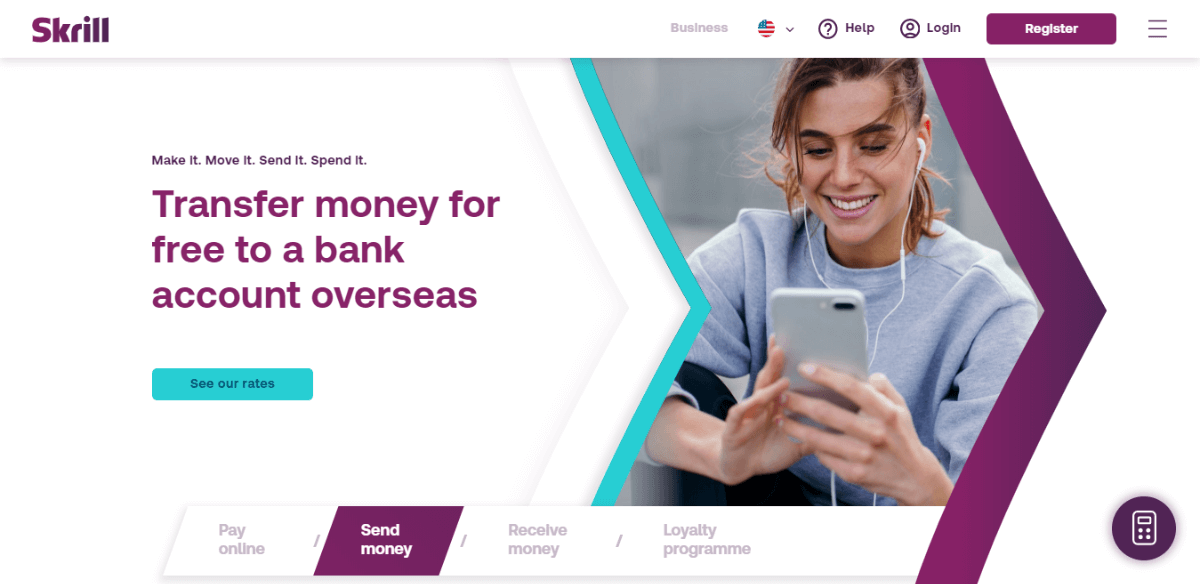
We have to use PayPal and its alternatives like Skrill, Xoom, and ACH because none of these support all countries.

Our use of platforms other than PayPal was simply because they don’t support:
- Nigeria and recently Turkey but Skrill does
- Uganda but Xoom ACH to a Ugandan Equity Bank account does
- Nepal but Xoom ACH to a Nepalese Bank account does
It’s such a pain that we have to use multiple accounts and PayPal alternatives, and the situation is always tricky since countries keep changing their policies.
For instance, Xoom may not work forever and insists that payments be remittances rather than payment for a service! This puts our payments to Nepal and Uganda in jeopardy.
PayPal is great because it lets you pay for a service but it only works in some countries, like India. At LD Talent we don’t mind the transaction rates since it’s way better than the worst alternative – Upwork which takes 20%.
PayPal takes 2.9%, Xoom charges $3.99 to $6.99 per transaction so that we only can send large amounts, and Skrill doesn’t charge us on our end but it takes the following fees:
- Withdrawal to Bank account– flat fee of EUR 5.50
- Withdrawal to VISA – 7.5%
- Withdrawal to mobile wallet – 1.45% (min. EUR 0.50)
- ATM withdrawal with Skrill Prepaid Mastercard®* – 1.75%
We tried Payoneer many times but it never worked for us, we can do ACH to a Payoneer global payments bank account though it’s rare for international folks to have this.
— Gobi, Founder at LD Talent
10. Plix
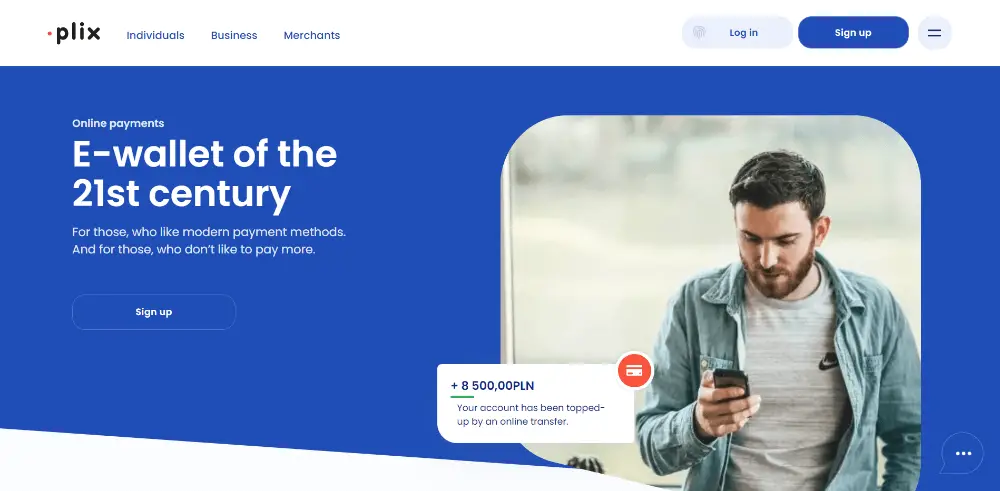

If you like your business to be treated professionally and have offers tailored to your size, budget, and needs, then Plix is the perfect solution for you.
Fees
Plix lets you open a multi-currency e-wallet with stable fees that will not change in a matter of days. There are no limits on the number of withdrawals, deposits, or transfers from your account, and no hidden costs for any of these transactions. All the fees are transparent, so you will always know how much it will cost to run your account.
Currency exchange
As for currency exchange on Plix, rates change frequently, so you are always up-to-date with the current state of your currency, and they aren’t high, looking at rates in banks.
Usage
If you are familiar with doing transfers, withdrawals, and deposits in the classical bank system, then Plix will be as easy as an ABC in usage. For those who have never owned a bank account, it is not rocket science either. After a few times, all the operations can be done within seconds, even when they require currency exchange.
Security
Every account is protected by individual logging data, so as long as you don’t give them to other people, your money is safe and sound on your account. Additionally, every transfer is protected by a one-time SMS verification code, similar to the one you use doing online banking.
Plix is great for everyday use in your company because your money is secured, you will always know how much it is to run your account and every type of transaction is possible to send from and to your e-wallet.
— Milosz Krasinski, Managing Director at Chilli Fruit Web Consulting
You May Also Like:
- Best CRM Software for Small Businesses
- Best Salesforce Alternatives
- MailChimp Alternatives
- Best Firewalls for Small Businesses
- Best PayPal Alternatives for Nonprofits
Conclusion
Based on expert insights, you’ve explored the top PayPal alternatives tailored for international payments and SMBs. Now, you’re equipped to choose the online payment solution that aligns perfectly with your business needs. I hope this detailed guide has empowered you to make a well-informed decision that benefits both you and your enterprise.
Have another PayPal alternative you love? Share your recommendations by leaving a comment below.
Hi there! I’m Nick Cullen. As the Senior Content Editor with Solution Suggest, my responsibility is to scrutinize and refine our articles and reviews, focusing on software solutions, games, apps, and websites. I’m dedicated to delivering reliable and enlightening content that offers viable alternatives to your current digital tools. If you have any suggestions or inquiries, you can reach me at editor@solutionsuggest.com. Also, I invite you to connect with me on LinkedIn!





















